
Article by Matthew Denholm, courtesy of The Australian.
30.09.2025
The stunning scale of Australia’s renewables rollout can be revealed: 1000 projects costing $1.33 trillion, including 25,000 more wind towers with 45,000km of associated roads, and 250 million solar panels on 406,000ha.
The figures – Australians’ first comprehensive glimpse of the true scale of the renewables revolution – have been compiled by conservationists and communities pushing for a better-planned rollout.
Those behind the project, led by Queensland conservationist Steven Nowakowski and Rainforest Reserves Australia, want to awaken Australia to the potential impact of a poorly planned rollout on wild places and rural land.
“I think the physical spatial footprint mapping is something Australians have never considered – and hence why this mapping may open Australians’ eyes,” Mr Nowakowski, a photographer and former cartographer, told The Australian.
“This rollout is ad hoc, chaotic madness with no costings by government and no regional or national spatial planning.
“I find it staggering that thousands of wind towers and transmission are being rolled out in such an unplanned manner and no one seems to care.
“This is a $1 trillion infrastructure campaign that has no local, regional or national plan, except for the Integrated System Plan, which says we need to reach a certain target by 2050.”
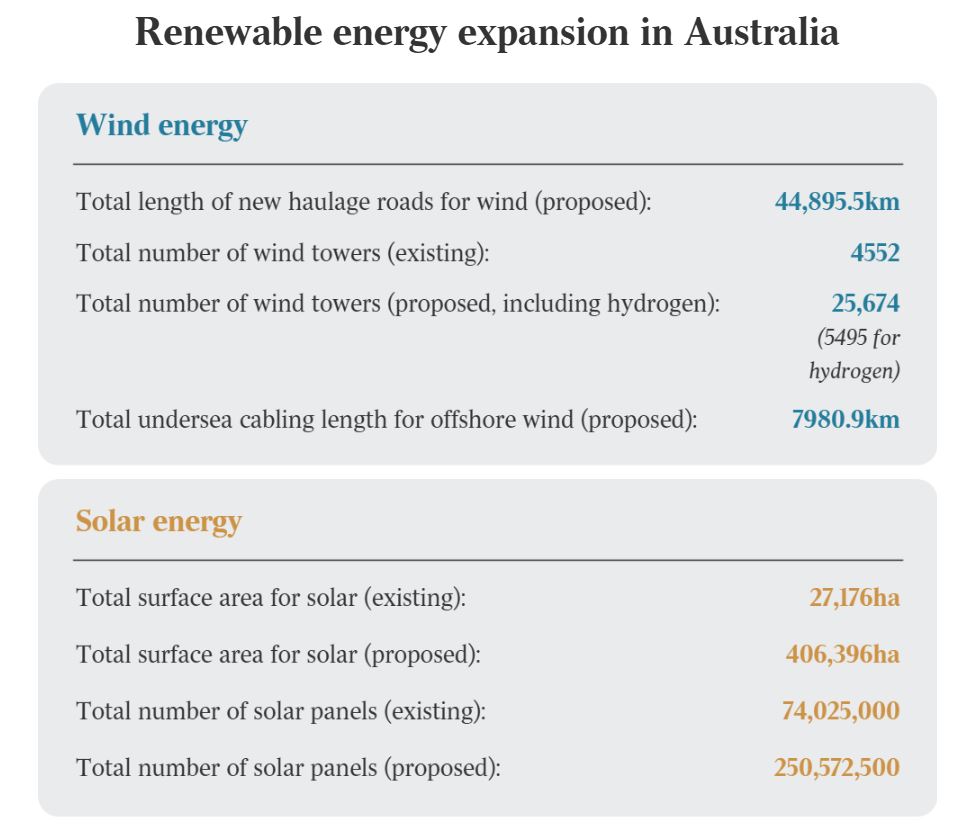
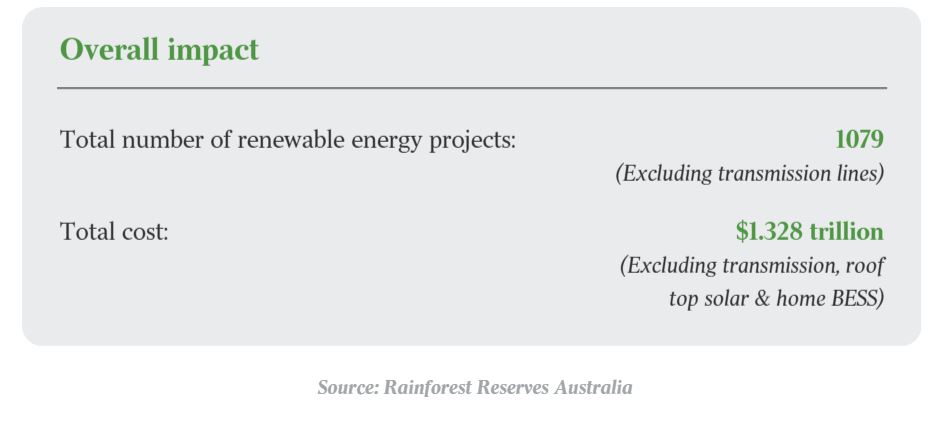
The group will launch an interactive online map of all renewables projects in October.
Its list does not include transmission lines or rooftop solar, nor reflect the projected acceleration of projects to meet the Albanese government’s net-zero targets and flagged changes to streamline renewables approvals.
But such is the increase in solar, it expands the area they take up from 27,176ha to 433,572ha, effectively equivalent to almost all of metropolitan Sydney, parts of the lower Blue Mountains and beyond Richmond and Campbelltown.
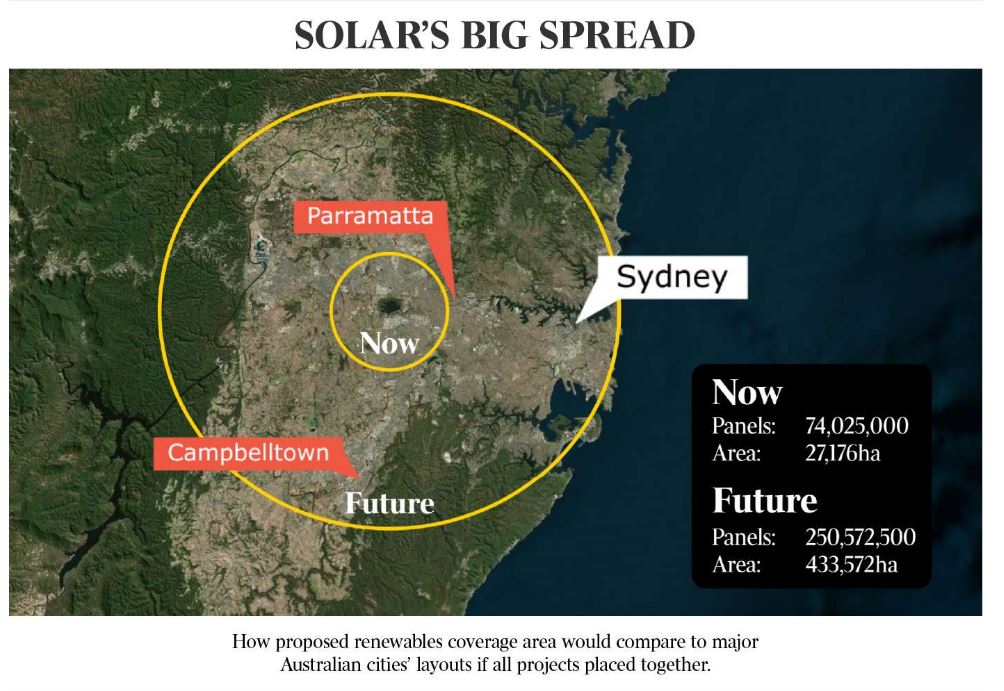
Mr Nowakowski, vice-president of Rainforest Reserves Australia, which regenerates degraded land and operates a cassowary rehabilitation centre, is one of a growing number of conservationists calling for better management of the rollout.
Former Greens leader, climate campaigner and veteran conservationist Christine Milne recently called on peak environment groups to fight renewables projects that destroy biodiversity.
And Wilderness Society national campaigns director Amelia Young warned the rollout “threatens nature in many of the same extractive and colonial ways that the industrial revolution did”.
Dozens of local communities are fighting wind farms or associated transmission lines, raising concerns about lack of genuine consultation, as well as impacts on local landscapes, species and vegetation and agricultural land.
Flashpoints include a host of ridge line projects in Queensland and the Robbins Island proposal in Tasmania’s northwest, as well as extensive transmission projects in Victoria.
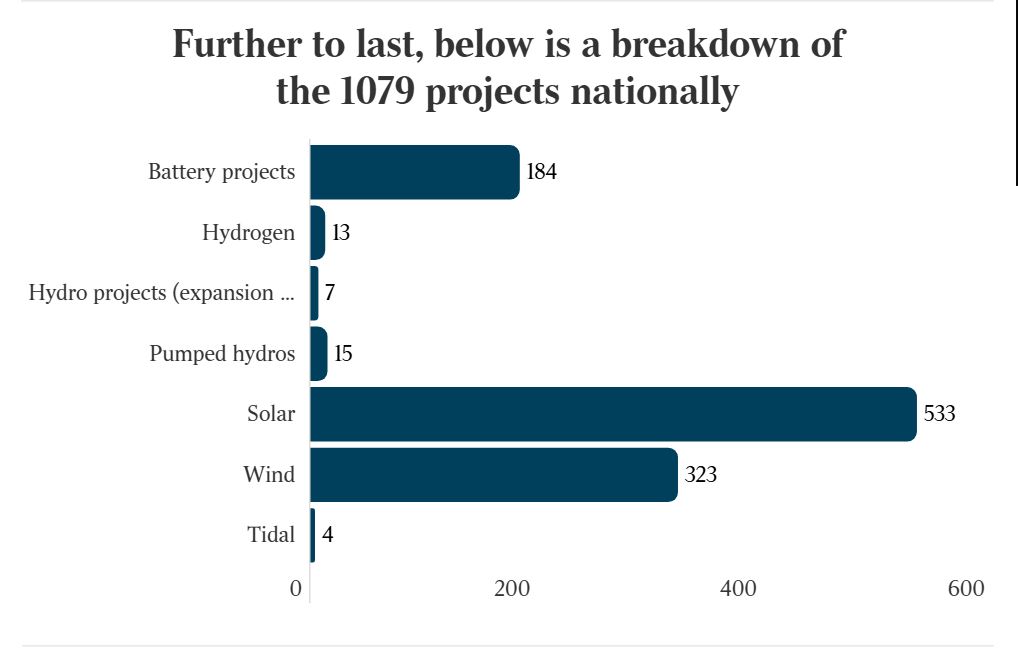
Last week, the Regional Australia Institute called for a new national approach to the rollout to bolster community engagement and lock in financial rewards for regions hosting renewables.
There is concern in the environment movement that if the rollout is not better handled, it will undermine public support for the energy transition and potentially derail the transition away from fossil fuels.
“Poorly located projects risk harming the precious places and wildlife we love and depend on – as well as eroding public trust,” warns a report published earlier in September by the Australian Conservation Foundation.
Mr Nowakowski, one of the few Australian conservationists backing nuclear energy to “be in the mix”, said his focus was on ensuring renewable projects did not damage the environment.
“We need to stop, take a break, a big deep breath and take stock of where we are,” he said. “We need to move away from coal and gas – but not at the expense of biodiversity nor rich agricultural lands.
“The federal government must have an ounce of credibility and stop immediately all projects we have mapped that are in places of remnant old growth forests, and stop projects like Robbins Island and the Gwara Baya Wind Farm (in Queensland).
“The new emissions target says we must stop clearing native forests to sequester carbon. How can you then clear native forests for renewables? This is the biggest oxymoronic policy.”
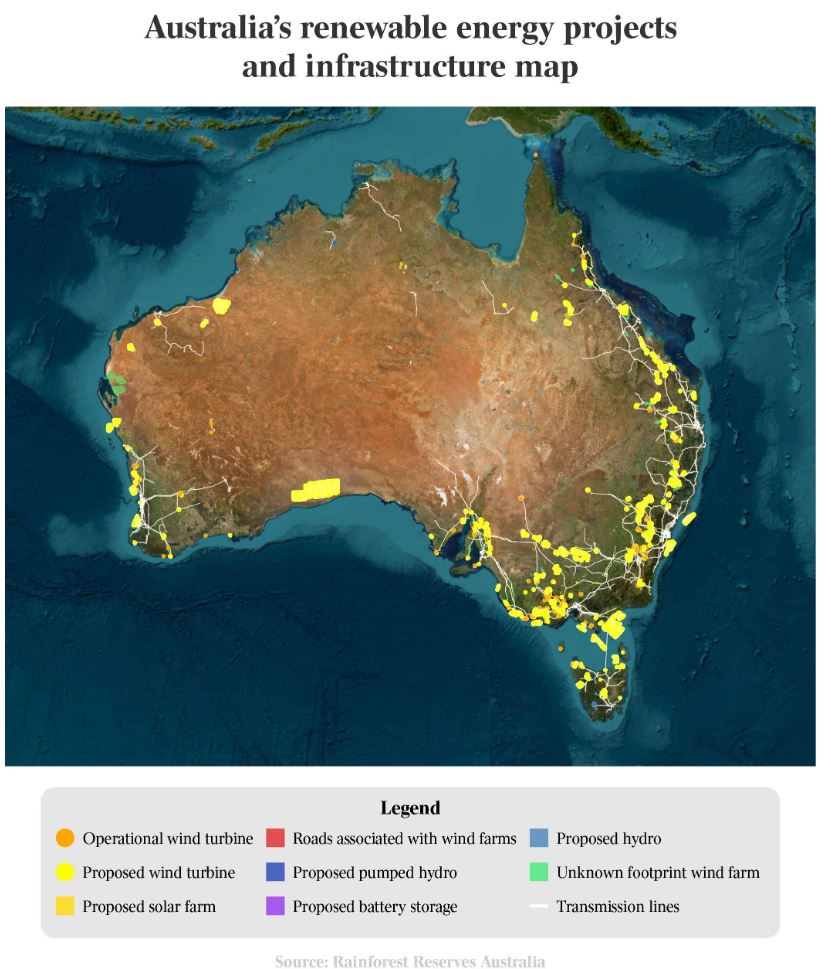
The data – collected by volunteer-assisted local communities – shows a total of 1079 operational and proposed renewable projects, not including transmission lines.
Their combined value, excluding transmission projects, rooftop solar and home batteries, is $1.328 trillion.
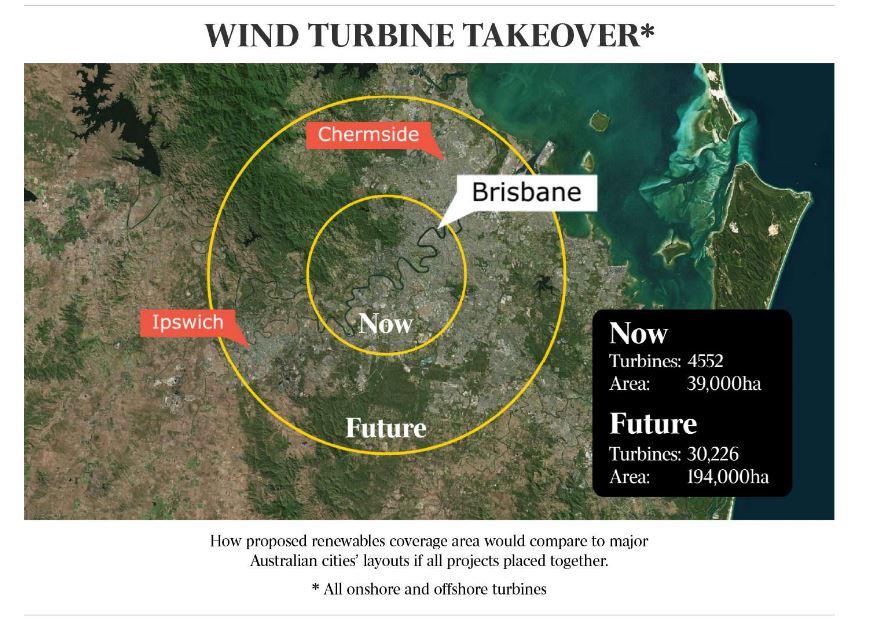
In terms of wind, there are more than 25,674 proposed new towers nationally, with more than 44,895km of associated new roads, as well as 7981km of undersea cabling for offshore wind.
A further 250,572,500 solar panels are proposed nationwide, covering 406,396ha.
The 1079 projects include 533 solar schemes (including 367 proposed), 323 wind farms (222 proposed), 184 battery (166 proposed), 15 pumped hydro (all proposed), 13 hydrogen (all proposed), seven hydro (all proposed or expansions) and four tidal (all proposed).
Community and environment groups are calling for an end to developer-led renewables site selection, particularly in the rush for the most productive wind sites.
“Developers cherry-pick the cheapest locations and the legislation is then fast-tracked to proceed,” Mr Nowakowski said. “This is not planning. It is an unfolding disaster for regional communities, the electricity system and nature.”
The ACF is calling for smart mapping and stronger nature laws to ensure renewables are not built in biodiversity hotspots.
The government is planning to fast-track renewable projects identified on a National Renewable Energy Priority List, but argues they will still meet all environmental requirements. It is also floating “go” and “no go” zones for development in regions.
“Renewable energy remains Australia’s cleanest, cheapest source of energy for the future,” a government spokesman said. “The Albanese government is committed to strengthening and streamlining our national environmental laws to improve national productivity as well as delivering greater environmental protections.”
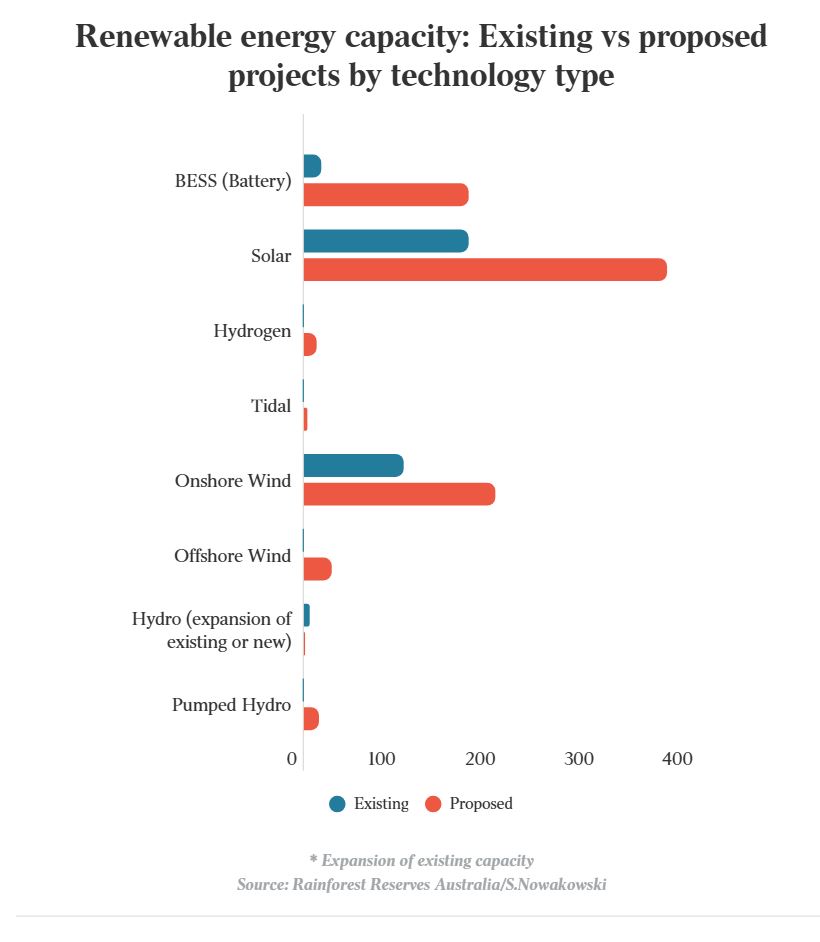
However, some fear the Albanese government’s reforms, including of the Environment Protection and Biodiversity Conservation Act, will only fast-track renewables, adding to perverse outcomes for nature.
Mr Nowakowski said even if stronger laws were enacted, they would come too late. “Our mapping shows that any reforms to the EPBC Act is too little too late to protect what is left of our wild places, because hundreds of projects have already bee